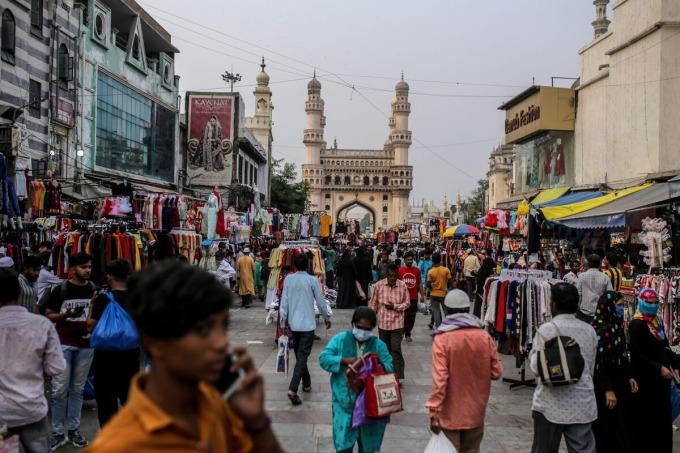GOLDMAN SACHS SAYS INDIA WILL OVERTAKE THE U.S. TO BECOME THE WORLD’S SECOND-LARGEST ECONOMY BY 2075
KEY POINTS
-
India is poised to become the world’s second-largest economy by 2075, Goldman Sachs forecasts.
-
On top of a burgeoning population, driving the forecast is the country’s progress in innovation and technology, higher capital investment, and rising worker productivity

India is poised to become the world’s second-largest economy by 2075, leapfrogging not just Japan and Germany, but the U.S., too, says Goldman Sachs.
Currently, India is the world’s fifth-largest economy, behind Germany, Japan, China and the U.S.
On top of a burgeoning population, driving the forecast is the country’s progress in innovation and technology, higher capital investment, and rising worker productivity, the investment bank wrote in a recent report.
“Over the next two decades, the dependency ratio of India will be one of the lowest among regional economies,” said Goldman Sachs Research’s India economist, Santanu Sengupta.
A country’s dependency ratio is measured by the number of dependents against the total working-age population. A low dependency ratio indicates that there are proportionally more working-age adults who are able to support the youth and elderly.
Sengupta added that the key to drawing out the potential of India’s rapidly growing population is to boost the participation of its labor force. And Sengupta forecasts that India will have one of the lowest dependency ratios among large economies for the next 20 years.
“So that really is the window for India to get it right in terms of setting up manufacturing capacity, continuing to grow services, continuing the growth of infrastructure,” he said.
India’s government has placed a priority on infrastructure creation, especially in the setting up of roads and railways. The country’s recent budget aims to continue the 50-year interest-free loan programs to state governments in order to spur investments in infrastructure.
Goldman Sachs believes that this is an appropriate time for the private sector to scale up on creating capacity in manufacturing and services in order to generate more jobs and absorb the large labor force.
Tech and investments
Spearheading India’s economic trajectory is also its progress in technology and innovation, the investment bank said.
India’s technology industry revenue is expected to increase by $245 billion by the end of 2023, according to Nasscom, India’s nongovernmental trade association. That growth will come from across the IT, business process management and software product streams, Nasscom’s report indicated.
Additionally, Goldman predicted capital investment will be another significant driver of India’s growth.
“India’s savings rate is likely to increase with falling dependency ratios, rising incomes, and deeper financial sector development, which is likely to make the pool of capital available to drive further investment,” Goldman’s report stated.
Downside risks?
The Achilles’ heel to the bank’s projection is the labor force participation rate — and whether it increases at the rate which Goldman projects.
“The labor force participation rate in India has declined over the last 15 years,” the report noted, underlining that women’s participation rate in the labor force is “significantly lower” than men’s.
“A mere 20% of all working-age women in India are in employment,” the investment bank wrote in a separate report in June, citing that the low figure could be due to women being primarily engaged in piecework, which is not accounted for by the economic measures of formal employment.
Net exports have also been a drag on India’s growth, because the country runs a current account deficit, Goldman said. The bank highlighted, however, that services exports have been cushioning current account balances.
India’s economy is driven by domestic demand, unlike many more export-dependent economies in the region, with up to 60% of its growth mainly attributed to domestic consumption and investments, according to Goldman’s report.
S&P Global and Morgan Stanley have also predicted that India is on course to become the third-largest economy by 2030.
India’s first-quarter GDP expanded 6.1% year on year, handily beating Reuters’ expectations of 5% growth. The country’s full-year growth is estimated to come in at 7.2%, compared with 9.1% growth in the 2021-2022 fiscal year.
Source: CNBC